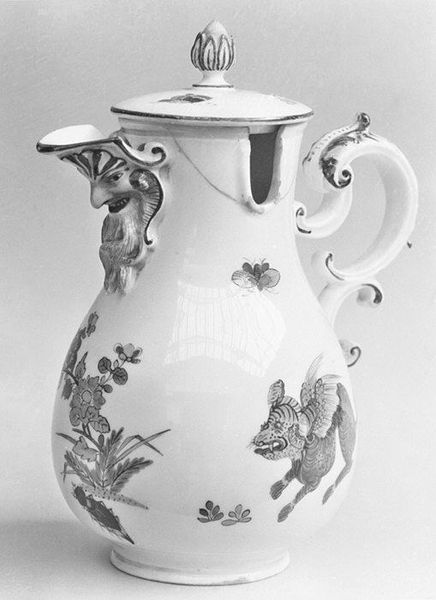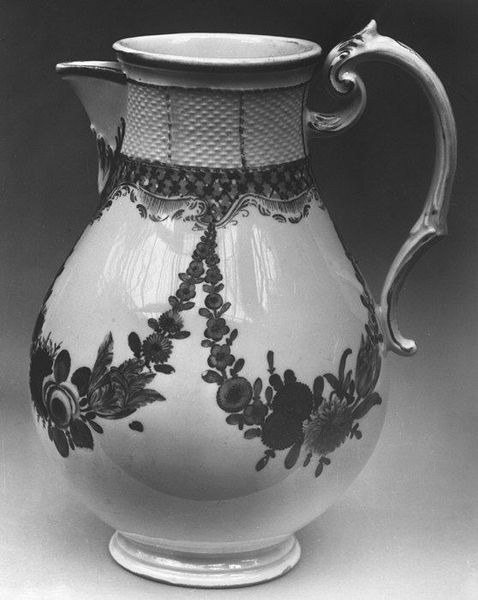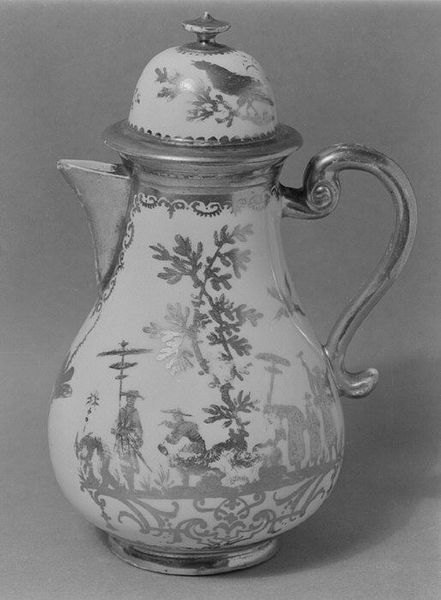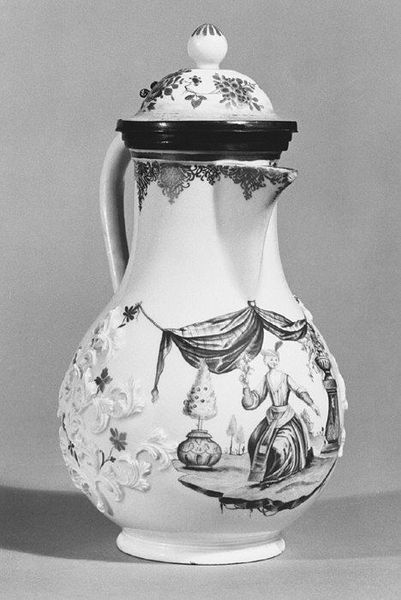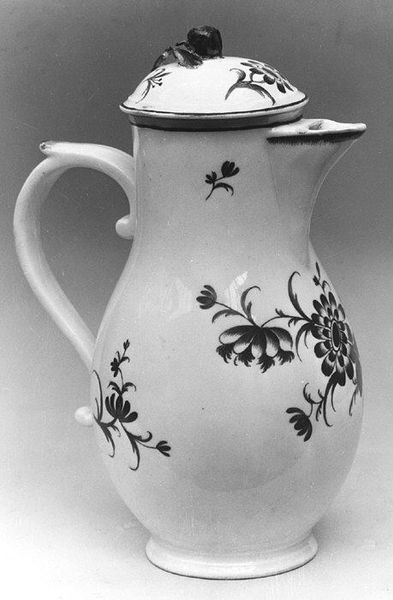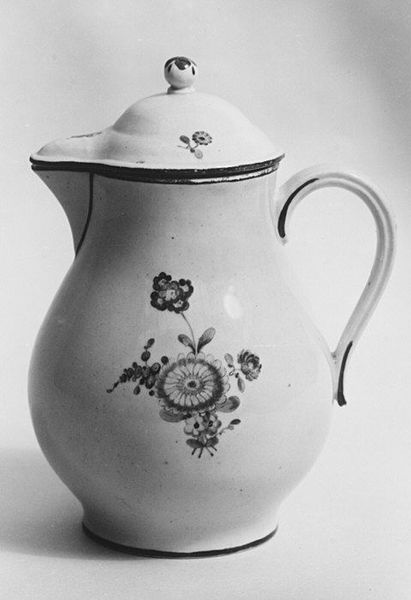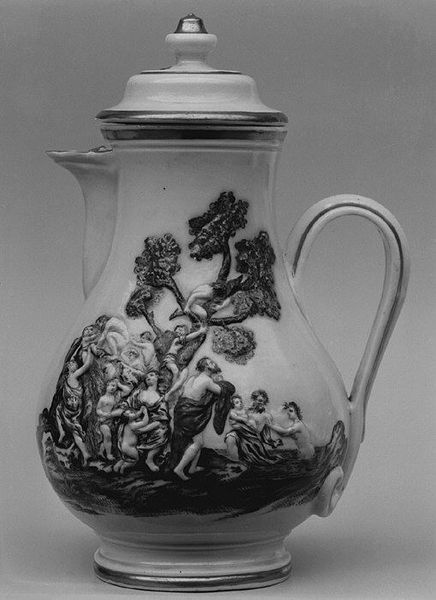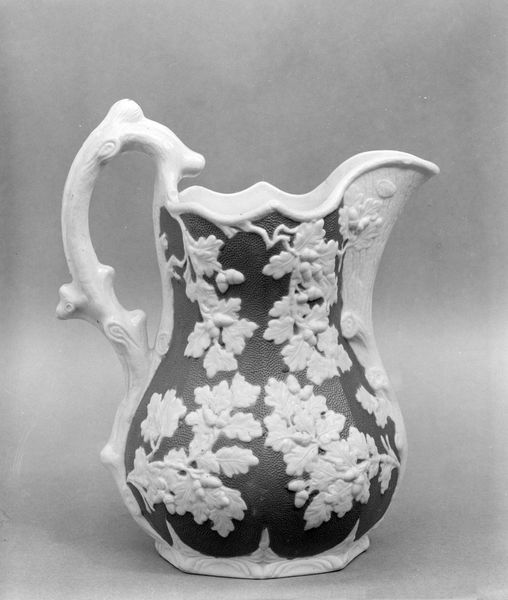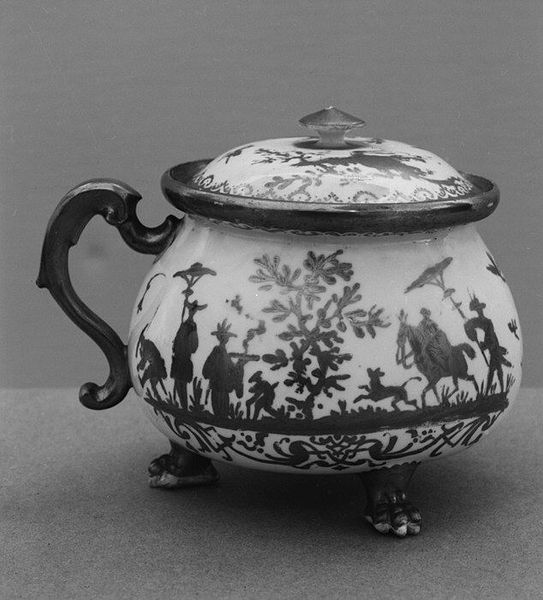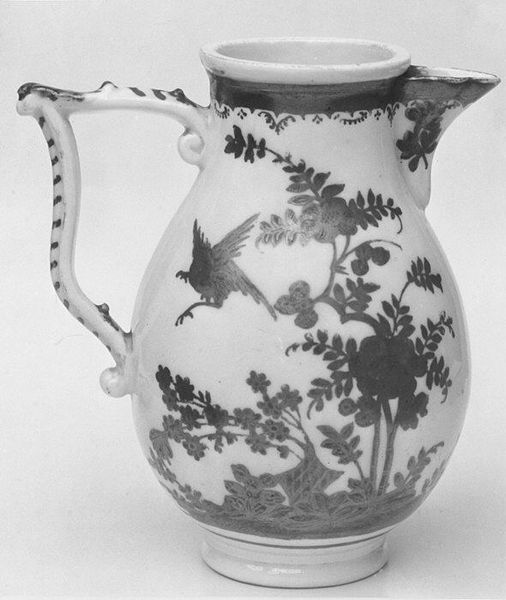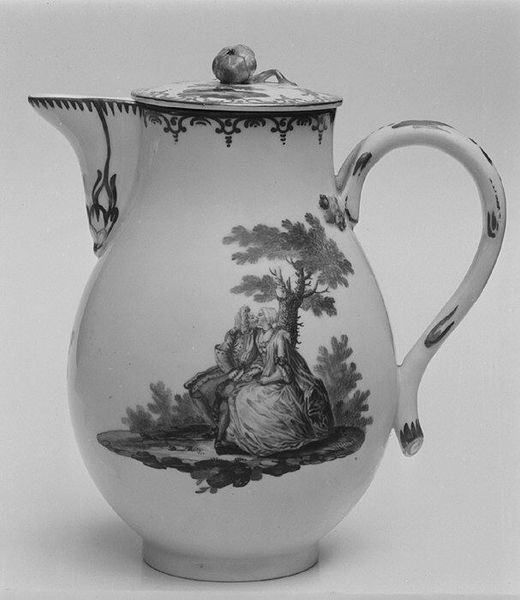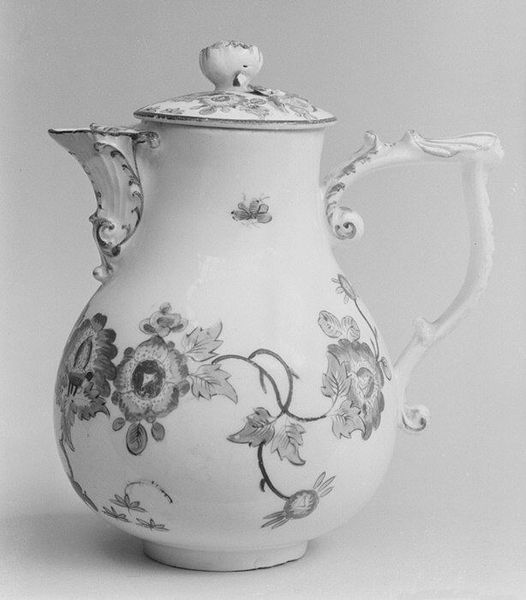
Dimensions: Height: 9 1/2 in. (24.1 cm)
Copyright: Public Domain
Curator: Looking at this Coffeepot, dating from about 1770 to 1775, crafted by the Fürstenberg Porcelain Manufactory, what catches your eye first? Editor: The monochrome palette really focuses the attention on the form. It has such elegant curvature, that subtly fluted handle, and the way the floral decoration clings to the porcelain surface… it feels at once restrained and quite sensual. Curator: It's interesting you say sensual, because porcelain production in the 18th century was deeply tied to aristocratic culture and display. Pieces like this coffeepot weren't just functional; they were potent signifiers of wealth, taste, and social status. Owning and using objects made of this fragile, imported material announced a very particular social standing. Editor: I see what you mean. There’s an almost self-conscious elegance to the piece, certainly not something you’d find in an everyday kitchen setting. I find the placement of the floral decoration also intriguing, since the flowers don’t merely fill the surface but are deliberately positioned to interact with the pot's shape. They soften the strict geometry. Curator: Exactly. The Rococo style, though often seen as frivolous, was a very conscious performance of gentility and refinement. A coffeepot like this allowed elites to broadcast those qualities, but beyond the intended consumers and the decorative purposes of it, can we appreciate this piece differently, and can we expand upon what art, even art associated with wealthy history, could represent to our current society? Editor: Certainly, by thinking about form, materials, and technique. Take the smooth glaze of the porcelain itself – that creates such a tactile invitation and begs the question of the maker. The balance between form and the carefully rendered botanical studies must have required a tremendous skill to produce a flawless piece. It brings focus to the art, beyond societal or class association, into a space of masterful creation. Curator: So in a way, while we can appreciate its historical importance as a status symbol, it can invite dialogue about artistic representation, class, gender, production methods, and socio-cultural purposes and meanings. Editor: Precisely. By understanding what and why we celebrate artifacts of the past, like this unassuming coffeepot. Curator: Absolutely, thank you.
Comments
No comments
Be the first to comment and join the conversation on the ultimate creative platform.
